
Kenneth Campbell: Goalkeeper. Born Glasgow. Age 22. 5 feet 11 inches, 11 st. 9lb. Previous clubs, Clyde Vale, Rutherglen Glencairn, Cambuslang Rangers. Joined Liverpool in May 1911.
Ephraim Longworth: Right-Back. Born Halliwell near Bolton. Age 26. 5 feet 8 inches, 11 st. Previous clubs, Halliwell Rovers, Hyde Street St. Georges and Bolton Wanderers. Joined Liverpool in 1910.
Robert Purcell: Left-Back Born Campbelltown, Ayrshire. 5 feet 11 inches, 11 st. 12lb. Joined Liverpool in 1911.
Thomas Fairfoul: Right Half-Back Born West Calder, Scotland. Age 32. 5 feet 9 inches, 11st. 10lb. Previous clubs, Doon Athletic, Kilmarnock, Third Lanark. Joined Liverpool in 1913.
Robert Ferguson: Captain. Centre Half Born Cleland, Lanarkshire. Age 27. 5 feet 11 inches, 11st. 6lb. Previous clubs, Third Lanark. Joined Liverpool in 1912.
Stand in captain for the Cup Final in place of Harry Lowe.
Donald McKinley: Left Half-Back Born Glasgow. Age 23. Previous clubs, Newton Swifts. Joined Liverpool in 1910.
John Sheldon: Outside Right Born Clay Cross, Derbyshire. Age 24. 5 feet 7 inches, 10st 11lb. Previous clubs, Nuneaton Borough, Manchester United. Joined Liverpool in November 1912.
Arthur Metcalf: Inside Right Born Sunderland. 5 feet 7 inches, 10st 11lb. Previous clubs, Durham Schoolboys, North Shields Athletic, Newcastle United. Joined Liverpool in 1912.
Thomas Miller: Centre-Forward Born Motherwell 5 feet 9 inches 11st 5lb. Previous clubs, Larkhill Hearts, Glenview, Lanark United, Hamilton Academicals.
Joined Liverpool in February 1912.
William Lacey: Inside Left Born Enniscorthy, Wexford, Ireland. Age 25. Previous clubs, Shelbourne, Everton. Joined Liverpool in 1912.
James Nicholl: Outside Left Born Port Glasgow. 5 feet 8 inches, 11st 2 lb. Previous clubs Cambuslang Rangers, Airdrie, Middlesbrough. Joined Liverpool in January 1914.
Liverpool Reserve Players
(Travelled but did not play)
S. Speakman (Right-Back), E. Peake (Centre-Half) T. Gracie (Inside-Left), J. Dawson (Outside-Left) Henry C. Lowe (Captain injured and did not play. Travelled with party)
The Form Guide
Going into the Cup Final, Liverpool had lost four consecutive League matches. They were 17th in the League with 33 points from 37 games. Preston on 29 points had already been relegated along with Derby County on 26 points. Liverpool had a goal difference of minus 17.
Burnley’s form over the season was better. Over their last four games they had won two and lost two. Burnley were 12th in the table on 35 points from 37 games and had a goal difference of plus 8.
Goals Scored in the 1913-14 FA Cup
Liverpool (14), Lacey 5, Miller 4, Nicholl 2, Sheldon 1, Metcalf 1, Ferguson 1.
Burnley (12), Hodgson 5, Lindley 3, Freeman 2, Halley 1, Boyle 1.
Once the formalities and preliminaries had been dispensed with it was down to business. The biggest game of the 1913-14 football calendar.
Burnley v Liverpool, The FA Cup Final, The Crystal Palace, Saturday 25 April 1914. Kick-Off 3:30 pm.
The teams lined up:
Burnley: Ronnie Sewell, Tom Bamford, Dave Taylor, George Halley, Tommy Boyle, (c) Billy Watson, Billy Nesbitt, Dick Lindley, Bert Freeman, Teddy Hodgson, Eddie Mosscrop.
Liverpool: Ken Campbell, Ephraim Longworth, Bob Purcell, Thomas Fairfoul, Donald McKinlay, Bob Ferguson, John Sheldon, Arthur Metcalf, Tom Miller, William Lacey, James Nicholl.
Referee: H.S. Bamlett (Gateshead) Linesmen: Mr J. Talks (Lincoln), Mr R.O. Rogers (London)
Match referee Bamlett brought the two captains together in the middle. Boyle won the toss and decided to play with the breeze at Burnley’s backs. The bright afternoon sun cast long shadows across the ground as Herbert Bamlett blew his new silver whistle and Burnley’s Bert Freeman kicked off in the 1914 Cup Final. The Clarets started well, Sportsman saying that they had the better of the approach play, but “the play lacked the fire one would expect to see in a game of such vital importance and the prevailing feeling was that the players at the start were troubled with nerves.” Though Burnley showed the neater football, Liverpool were quite as dangerous. The players found it difficult to get hold of the ball with the rock-hard pitch. With ten minutes gone, Dave Taylor slipped on the hard ground, his studs making no impression and Jimmy Nicholl struck the ball hitting Taylor full in the face. “It appeared to stun Taylor but the probability is it saved the Burnley goal.”
Ronnie Sewell settled into his role and foiled an attack by Tom Miller by coming off his line. Had he stayed there, “he might well have been beaten and he disconcerted the on-coming forward who shot just outside the post,” said Sportsman.

Figure 54: The Final Gets Underway

Figure 55: Action During the Match
While Ronnie Sewell was tested a few occasions, Ken Campbell in the Liverpool goal, had more work to do and a shot from Dick Lindley was saved at the expense of a corner. Burnley did the greater part of the pressing but the best chance fell to Liverpool’s Arthur Metcalf that the Burnley half-backs cleared. Every now and then Burnley got their two wingers moving. Eddie Mosscrop’s first centre came across but when it landed it bounced too high on the hard ground for the forwards to get a hold of. Bamlett’s whistle was heard to often as the ball went into touch for numerous throw-ins and several off-sides. “The result was that the exhibition was comparatively poor during the initial stage, but even allowing for the heat, play did not descend to the level of the semi-final at Old Trafford. On the whole, the play of the first stage was even,” said Sportsman as Herbert Bamlett blew his whistle to bring the goalless first half to a conclusion.
With the bright sun, the players were glad to leave the field for a well-earned ten minute rest and refreshment. During the interval, the crowd were entertained once more with the regimental bands marching up and down the pitch to the strains of, “Here’s to the maiden of the bashful fifteen.” His Majesty had enjoyed the atmosphere and though his schedule had planned for him to leave early, he stayed for the whole of the second half to see the match to its conclusion.
The players came out for the second half and for the first ten minutes the play continued much like the last ten minutes of the first half. Both sides had attacks only for the defences to block the forward play. But after the players had settled down, the game improved. Sewell was the first keeper’ to be tested and then Dick Lindley won Burnley’s first corner of the second half at the Liverpool end. Sewell then made two good saves, with both Taylor and Bamford busy. Fourteen minutes into the second half, Burnley got a break. Sportsman picks up the story, “there was no doubt in the minds of Burnleyites as to the outcome of the fray, though in fairness it should be said that Liverpool played up well after the fatal blow as the sequel showed it to be, inflicted by Freeman. From a throw-in on the right, Nesbitt sent across to Hodgson who cleverly headed the ball to Freeman, who in a twinkling, first time shot without any pulse-beating preliminaries shot the ball into the far corner of the net. Campbell had not the ghost of a chance. For a spell nobody knew exactly what had happened, but there were a few Burnleyites behind the goal and they first gave the welcome news to the onlookers at a distance for they, like the Liverpool defenders were completely bewildered by the rapidity with which the feat was performed. It was a fine goal.”

Figure 56: Freeman Scores!
The Express’s other reporter Brunbank reported the goal slightly different, “The goal which settled it was a masterpiece. So far as shooting went, up to that point nobody felt that a goal would ever be scored if the teams played all afternoon and night. But it was Freeman’s unexpected that happened. He has a knack of doing just what nobody thinks possible. Hodgson who all through the game had trapped the ball better than any man on the field leaped high in the air and had headed the ball over the half-back and before anybody realised what had happened, Freeman darted in like a flash of lightning and taking the ball before it touched the ground hooked it with his instep into the left-hand corner of the net half-way up the net upright with Campbell and his two backs helplessly looking on.”
(Brunbank, Burnley Express 29/4/1914)
From the restart Liverpool came at Burnley and had two good opportunities to equalise, only to be thwarted by Sewell’s further acrobatics. A Mosscrop centre found Lindley who was given the best opportunity to put Burnley two-up, but his shot struck the corner of Liverpool’s post and crossbar. A second Mosscrop run saw him cut inside and shoot but his effort went over the crossbar. Liverpool then caused a great deal of anxiety in Burnley’s defence as three successive attacks directed towards the Burnley goal which Sewell and the defence just managed to clear. One Liverpool effort was a long dropping shot from Nicholl just inside the Burnley half, “which he [Sewell] secured after the fashion of an out-fielder at cricket after watching the flight of the ball and patiently waiting for it,” said Sportsman. Another Sewell save on his knees, was quickly followed up by another save just under the crossbar. In the last quarter of the game, both Taylor and Boyle needed attention from the trainer. First Taylor was hurt and then Boyle was injured in a collision with Fairfoul. The Burnley captain looked in agony at one point and had to be taken from the field. He returned shortly after but not before Hodgson was accidentally kicked in the face and at one point Burnley only had only nine fit players on the field. Hodgson returned to the game with a sticking plaster over a cut, his shirt bloodied. As the Burnley players kept Liverpool at bay for one final time, Herbert Bamlett blew his whistle to end the game and give Burnley victory.
At Full Time: Burnley 1 (Freeman), Liverpool 0
Attendance: 72,778 (Gate Receipts £6,687)
--xxx---
At the final whistle there were scenes of joy and jubilation around the stadium from the thousands of travelling Burnley supporters and sporting congratulations and applause from Liverpool’s supporters. Burnley captain Tommy Boyle, stood in the centre-circle, hands on hips. It had been an eight year struggle in trying to win the Cup first at Barnsley and now Burnley. His dream had come true. For thousands of Burnley supporters around the ground, they could go all the way back to Alec Leake’s team and the disappointment they’d all felt when Burnley had lost to Manchester United in the replayed ‘snowing’ game. Then there was the bitter disappointment of the 1913 Cup run which had ended in the mud at St. Andrews. After years of struggle with nothing to show, all their dreams, hopes and prayers had finally come true. Burnley had won The Cup and it was hard for them all to believe it.
In front of the pavilion, the stewards were busy arranging the press and photographers into line in order to take pictures. Pictures that would be syndicated and wired across the country and beyond. A large contingent of uniformed policemen, their primary presence to avoid any suffragette demonstrations, (which never materialised) formed a cordon for the two teams and officials as they left the pitch. The Liverpool team led by Bob Fergusson climbed the Pavilion steps first to receive their runners-up medals from His Majesty. The Burnley players nervously waited on the pitch, trying to remember all the things they had been told before the game, to bow to the King, only speak if you are spoken to. Tommy Boyle lined up his team. When the last Liverpool player had passed by the Cup and had started down the steps, the FA stewards called the Burnley captain and his team forward.
Boyle climbed the steps first. As British Pathe film footage shows, the Burnley captain paused halfway up the steps and pulled up his shirt sleeves to the elbows. At the top of the stairs the Burnley captain bowed to His Majesty and shook the King’s outstretched hand. The King gave a few words of congratulations before handing Boyle the Cup decorated in claret and blue ribbons.
Boyle moved down the balcony toward where Lord Kinnaird was standing and the FA Secretary, F. W. Wall who handed him his gold Cup-winners medal. Boyle took the medal and thanked him and nodded. Smiling, beaming. Boyle paused on the balcony and then the steps for more photographs with the Cup in his arms, as scores of camera flashbulbs went off. Boyle descended the steps carrying the trophy, ‘like a babe in arms’, onto the pitch for more photographs. Each Burnley player followed the captain and went through the same ritual, bow, give thanks to His Majesty and receive the medal before returning back to earth. After the long journey starting in the First Round against South Shields back in frosty January, the ceremony was all over in a matter of seconds.
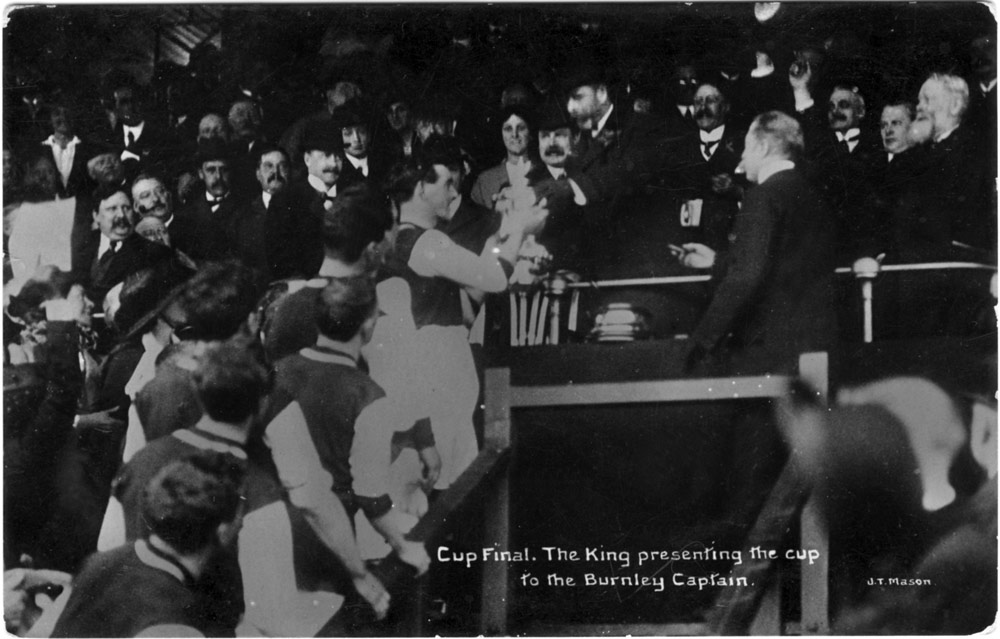
Figure 57: Tommy Boyle Is Presented With The Cup
Tommy Boyle and Bob Fergusson were interviewed by the press straight after receiving their medals. Boyle said, “It has been a great struggle, a great game. Liverpool have striven magnificently. I think we were just the better team and deserved to win.”
Bob Ferguson, said it to have been “a grand struggle”. “Whilst I would have liked to have won the Cup,” he said, “Burnley had played hard, every player was a sportsman and they each deserved their success.”
The News Reaches Burnley
At Turf Moor, at the Charity Shield Final which had kicked off at the same time as the Cup Final, an increasingly anxious crowd were eager to know what was going on. From when the match kicked off at 3:30 pm, the telephone in the secretary’s office rang every ten minutes with updates from Sydenham. The crowd were given the news from a youngster who carried a board around the pitch with the time and the score, “Ten minutes, no score”; “Twenty minutes, no score”; “Half-hour, no score” and “Half-Time, no score.” When another message came through with “No score yet” in the second half, people began to resign themselves to a draw and a replay. The mood completely changed once news of Freeman’s goal came through.
“All at once two or three people came running out of the players’ entrance and their shout was taken up by the crowd with hearty good will. ‘Burnley must have scored’ they said but it was some moments before the youth with his score board began his triumphal procession around the field. His board read, ‘Burnley 1, Liverpool 0; Freeman scored.’ There was much cheering and hat waving among the small crowd. When the final whistle came there was another burst of frantic cheering. It was a few minutes given over to ecstasy and the joyful culmination of a period extended over about four months, which had played havoc with the emotions of staunch supporters of the winners of the English Cup.” (Burnley Express 29/4/1914)
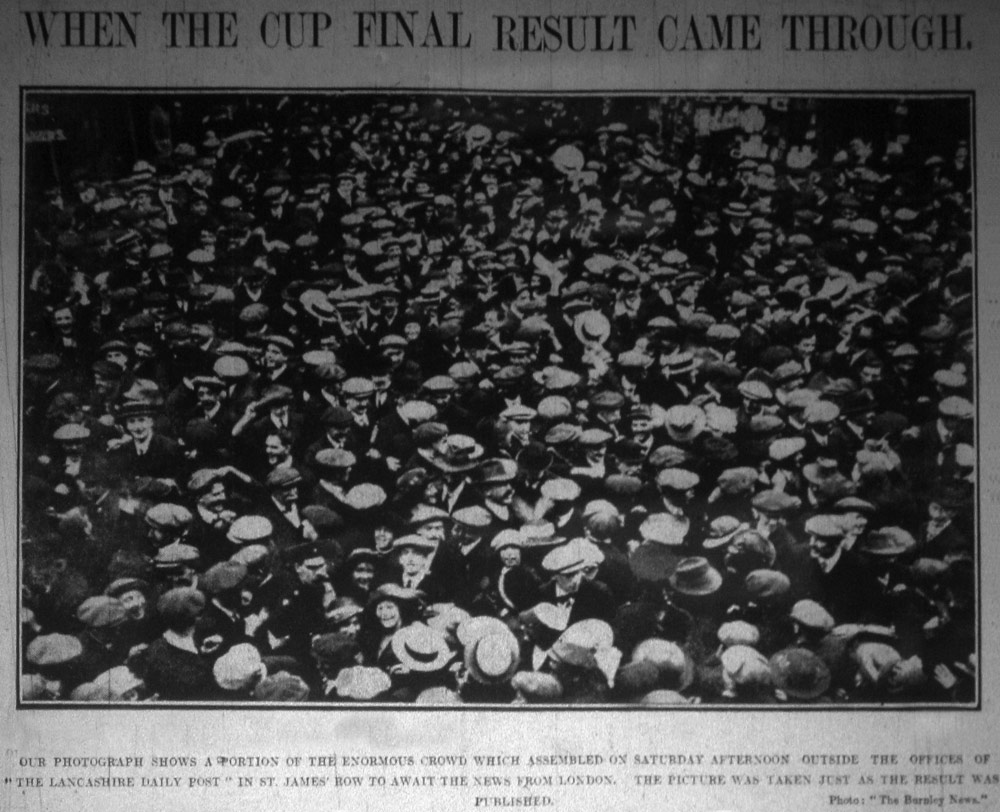
Figure 58: Crowd Outside Newspaper Offices in Burnley.
In Burnley centre, a large crowd of people had gathered in St. James’s Row outside the offices of the Lancashire Daily Post. “In the centre of town there was a large concourse of people which extended from Yorkshire Street to the bottom of Westgate,” reported the Burnley Express. Once victory had been confirmed the celebrations started. It was like no other Saturday night in town with drinking and dancing in the streets. Town-centre pubs ran out of beer before closing time and there were scenes like nothing before as the whole population joined in the celebrations. By early Saturday evening, ‘Funeral cards of Liverpool’ were being sold in St. James’s Street with the verse:
Ah! If they only had not fancied
That football they could play,
We should never had a reason
For a Funeral today.
Following his presentation of the Cup and medals to the players, The King left the Pavilion shortly after 5:30 pm. The Royal party made their way back along the same route, returning to Buckingham Palace for Princess Mary’s birthday party.
The Burnley team didn’t have much time at The Palace themselves. It was gone 5:30 pm and the team needed to get back to Charterhouse Square to change for dinner. Tommy Boyle carried the Cup, (news photographs mostly show Boyle hold of the Cup and not any of his team mates) and the team made their way slowly back in their taxis along the crowded roads to Smithfield. Along the way, making their way back to central London, were the thousands of jubilant Burnley supporters who had cheered the team on through all the Rounds of the Cup, now heading for home. Tired but happy. It had been a long but truly wonderful day. The stories they would tell when they got home. Stories they would tell their children. Stories they would tell their grandchildren. Memories that would live forever. They had been there on the day and seen their team win the Cup in front of the King. As Burnley supporters, at that moment, after experiencing season after season of Cup defeats and watching ‘bigger’ clubs take the big prize, they must have felt an overwhelming feeling of emotion to have been there and been part of it all. Part of history.
The Celebration Dinner
The celebration dinner was hosted by Philip and Ottoline Morrell at The Connaught Rooms, Great Queen Street, Kingsway. The building located in-between the Freemason’s United Grand Lodge of England and next door (in 1914) to the Freemason’s Tavern where in 1863 the Football Association was formed. (A wall plaque erected in 2013 now depicts the location.)
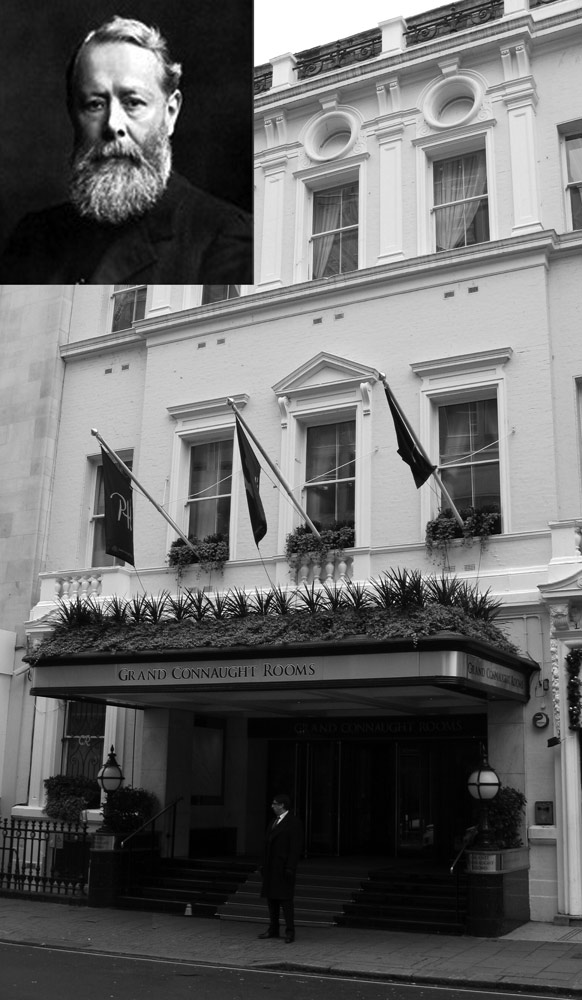
Figure 59: The Connaught Rooms. Inset Lord Kinnaird.

Figure 60: The Connaught Rooms Banqueting Hall.
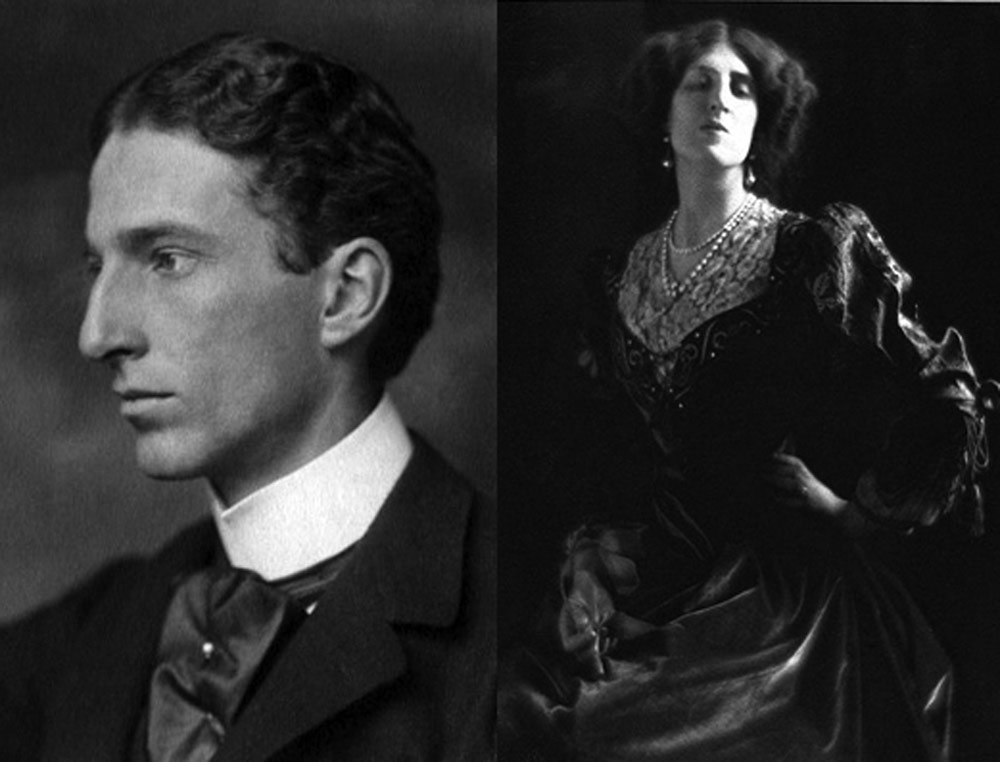
Figure 61: Philip and Lady Ottoline Morrell
Guest of Honour was Lord Kinnaird, the former amateur footballer and now President of the Football Association who sat at the top table with ‘The Cup’ alongside the Morrell’s. Also present at the top table were; Burnley’s Mayor, James Sellars Kay, Lord Weardale, Albert Smith MP (Clitheroe) Alderman Whitehead JP President of Burnley Football Club, Harry Windle, Chairman and Burnley directors and their wives. (Strangely John Haworth’s name was not listed in the Express). All the Burnley players along with Jerry Dawson, Bob Reid and Levi Thorpe the Burnley trainers, their wives and fiancées were there along with other guests and members of the press.
As the guests had arrived, they were greeted by Philip and Lady Ottoline, and once everyone had gathered they sat down to dinner which consisted of;
The Cup Final
Connaught Rooms, Holborn, London.
Consommé Burnley,
Sole Florentine,
Chicken Casserole or Saddle of Lamb,
Mushrooms on Toast or Peaches in Ice,
Followed by Coffee
The dinner was accompanied by music. During dinner, the Cup was filled (reports say not what with – presumably champagne) and was passed around to all the guests in turn to drink from and it was cheered along its route around the room.
The After Dinner Toasts
After dinner had ended, the first toast was offered to ‘The Burnley Football Club,’ by Philip Morrell. Morrell began, To the Winners of the Cup! (applause) Those four words were he thought more eloquent than any number of speeches. The winning of it would be remembered in Burnley for many a long day (applause).
He thought he might fairly say that no such day had Burnley known in its long hundreds of years of history, during which it had grown from a little town of 5,000 inhabitants to the great town they knew now, as there would be that day (hear, hear). Everywhere the people would be saying, “We’ve won the Cup” and that was enough. He was glad to know that of the 15,000 spectators who he was told came from Burnley – a great many of whom came to the House of Commons that morning (laughter) there would not be one who would not go back happier thinking that his town and team had won the greatest trophy in the football world. (Applause) And as to Boyle and the men who had played that day, he could say on behalf of every one of his constituents that they were proud of them. They have made the name of the town famous throughout the country. Burnley was known for its cotton and for its education but he was bound to say it was still more famous on account of its prowess in the football world. They were not only proud of the fact that they had won a great victory, but they were proud of the way they had won it. (Loud applause.) It had been a great day for them all and in asking them to drink to the Burnley Football Club he coupled with the toast the names of Alderman Whitehead, Mr Windle and Mr Boyle. (Applause)
In seconding the toast, Lord Weardale expressed his pleasure at the opportunity of seeing so many friendly faces from a town which would always hold a place in his heart. That was, continued Lord Weardale, an auspicious occasion and one in which he was pleased to take part because his acquaintance with the Burnley F. C. went back many years when Alderman Whitehead and his friends were struggling with all sorts of difficulties. Burnley had had its ups and downs in football; in the days he remembered it was chiefly ‘downs’ (laughter).
Now, however they were on the ‘up-gradient’ and they could readily forget the old days and only remember the triumphs of today. He ended on, “Bravo for Burnley.”
The Cup was passed round, one of those who drank from it was Bert Freeman’s father (Tom Freeman) who, wearing Burnley’s colours had come into the room. When his identity was known there was much cheering.
Alderman Whitehead, Burnley F.C.’s President responded to Lord Weardale’s words. He began, “I have been twenty years waiting for this day, and am exceedingly happy.” He said they all owed a great debt to the players (hear, hear). When Burnley had been drawn against Bolton Wanderers he was told by many that they had met their fate, but the players rose to the occasion and gave an exhibition of football at Turf Moor such had not been seen for a long time. Whitehead’s main thanks went to Jerry Dawson who had ruled himself out of the Final.
“When he was injured the previous week they felt it would almost be a calamity if he could not be fit for the Final and they felt so much that he should play that they left it to him to decide. Like the grand and great sportsman he is (loud applause). Jerry had said, “I might as well tell you, gentlemen that I don’t feel quite fit, and if I were injured in the first minutes of the match it would probably mean that they would have to play with ten men.”
That said Alderman Whitehead showed Dawson’s made of good stuff and his love for the game and for his club (loud applause) here he had the opportunity of getting if not a winning medal at least a runners-up medal, but for the good of his club he gave his chance up (loud applause). In thanking Mr and Lady Ottoline Morrell for their hospitality Whitehead said he felt sure the winning of the Cup had given as much pleasure to them all.
Harry Windle was loudly cheered as he rose to speak and remarked he was not less proud than the others because they had the opportunity of celebrating such an occasion. At one time and within his time of football management, too, it would have seemed scarcely dignified for many of the gentlemen present that evening to sit down to dinner in the company of professional footballers. Now however, throughout the length and breadth of the land professional footballers were looked up to as members of the community as much as men of other professions. Windle said he was proud to see the President of the Football Association present and proud to be chairman of the club during the time Burnley had won the Cup. In winning the Cup he thought, throughout England no one would begrudge Burnley their victory (loud applause).
As to the players, on behalf of the directors he congratulated them on the splendid manner in which they had behaved and he added his sympathies to the others with Dawson and also to the reserve men (Reid and Thorpe) who had trained with them but who had not been able to play in the games. He particularly congratulated one player on the many honours he had won in his first season of first-class football that was Mr Mosscrop (Applause)
As Windle concluded he too added that Burnley had had difficulties in their time, but now they had won everything they had taken part in except the First Division Championship (When someone in the audience said, ‘NEXT YEAR’) and applause as he sat, Tommy Boyle rose to speak.
“I am very pleased, seeing I am captain of the Burnley club at having won the English Cup (loud applause). I had hard lines at not winning it when I was with Barnsley and they won it after I left. But since I came to Burnley we only just got beaten for promotion the first year, last year we won promotion and this year we have won the Cup. (Loud Applause) I wish to thank Lady Ottoline and Mr Morrell for the kind way they have entertained us tonight and I hope and think we shall win the English League Championship next year (Applause). I sympathise with Liverpool but from the bottom of my heart I hope they may win the Cup next year.” (Loud applause and cheers.)
Mr C.E. Sutcliffe, member of the Football League and formerly Burnley Football Club, who had been invited, wired the following congratulations, “Regret cannot join you, rejoice with you that Burnley’s first Royal soccer team. Have deservedly won first Royal Final. A glorious climax to a wonderful season of remarkable progress. Hearty congratulations to all. Hurrah and again Hurrah over and over again.”
Another wire came from Turf Moor, “From Burnley Sunday School League at Turf Moor. Heartiest congratulations on splendid victory. Great reception at Turf Moor. Gate £36.”
Albert Smith MP gave a short speech as to how the day had gone. He reflected on the day when Prince Albert Victor, the King’s late elder brother had visited Turf Moor for the opening of the Victoria Hospital. Then he introduced the next speaker, Lord Kinnaird, The Football Association President.
Lord Kinnaird began by thanking his guests for the dinner and praised the players and the club for the way they had conducted themselves in all the rounds to the Final. He said, he believed the Football Association was a great educational establishment, they were teaching the great principle that the greatest thing for a young man to do was to play for his country and his club without caring a pin what happened to him (hear, hear).
When he heard what Dawson, their goalkeeper had done he felt that men realised that they must take those disappointments for granted. They knew it was a great sacrifice it must have been and yet Dawson never hesitated (loud applause).
It reminded him of the time when the Old Etonian team first won the Cup. The captain Sir Francis Marindin was not well, and in spite of the temptation he decided not to risk his team’s chances and had stayed in bed and allowed a present member of Parliament who still took a great interest in the game, Sir John Rawlinson the opportunity of playing in the Final and getting a Cup medal. Kinnaird praised Burnley’s determination in rising from the Second Division to the First and after missing out on the Final last year, winning in it this season and that it showed other clubs what they could do with the same determination.
Speeches followed from The Mayor of Burnley, James Sellars Kay, and more words from host Philip Morrell that followed Lord Kinnaird, but the final words went to the hostess of the evening, Lady Ottoline Morrell who rose to great cheers.
“I am very pleased to be able to say what an enormous privilege and pleasure it has been to me to welcome you here tonight because I have known you all at a distance for many a long day, and I take a tremendous interest in football. I think you all merit every bit of praise showered on you when you return on Monday. Perhaps I am prejudiced in your favour and am not acquainted with football its wide sense but I take a tremendous pride in your football team, because I think there is no team playing such an honourable, splendid and true game as you play (Applause). One thing I always notice is it is always our men who get hurt! (Laughter) I feel it is a real privilege to know under more intimate circumstances the heroes I have looked upon for many a long day,” (loud applause).
Lady Ottoline drank from the Cup and was later flattered when Bert Freeman and several other members of the Burnley team begged her to go back to Burnley with them to join in the victory parade on Monday afternoon.
After the speeches, the celebrations continued with music and dancing before the party eventually broke up in the early hours and the Burnley team returned to Charterhouse Square. Later, at Bedford Square, Lady Ottoline wrote to [her lover] Bertrand Russell, describing the evening’s celebrations and her affection for the team: “They look upon me as their mascot, but I had to decline their requests to travel back to Burnley with them.”
Earlier in the evening just after the Final had finished, there had been a train accident that had involved a number of football supporters from Manchester making their way home from London.
TRAIN COLLISION IN TUNNEL
Cup Final Excursionists Injured near Finchley Road
Hundreds of Cup-Final excursionists had an alarming experience in an accident which occurred while they were travelling homewards on the Great Central Railway yesterday afternoon. The accident occurred in Canfield place near the Finchley Road Metropolitan Station and the train was the 5:30 pm from Marylebone to the midlands and north of England.
A number of extra coaches had been attached to the train in order to accommodate holders of two-day tickets. So great was the load was the train was unable to pull the load up the gradient past Finchley Road and the train came to a standstill with several rear coaches in the tunnel. An auxiliary engine was sent for but when the driver arrived he failed to see the stationary train and the engine crushed into the back. Passengers were thrown onto the floor and one was hurled out of the carriage into the tunnel. Local doctors and members of St. John Ambulance rendered first aid at the scene and sixteen persons were taken to Marylebone at St. Mary’s Hospital suffering cuts, bruises and shock. The most serious case was a Mr Pomphret from Openshaw Manchester who suffered a fractured rib and other injuries along with a number of other football enthusiasts from the Manchester district.” (Daily Express 27/4/1914)
The majority of the thousands of football supporters who were at the Cup Final had a safer journey home. They left Euston, St. Pancras, Kings Cross and Marylebone railway stations on the ‘midnight specials’ on Saturday night and began arriving home bleary eyed at 6:00 am on Sunday morning.
Sunday 26th April 1914
After breakfast on Sunday, some of the players went to church and at 10:00 am the Burnley party took in a motorbus tour that visited Shepherd’s Bush. Kew Gardens, Old Richmond Park, Hampton Court, Virginia Water and Windsor. On their return the players had free time on Sunday evening where some took in an evening stroll along the Thames Embankment and a short boat trip along the river.
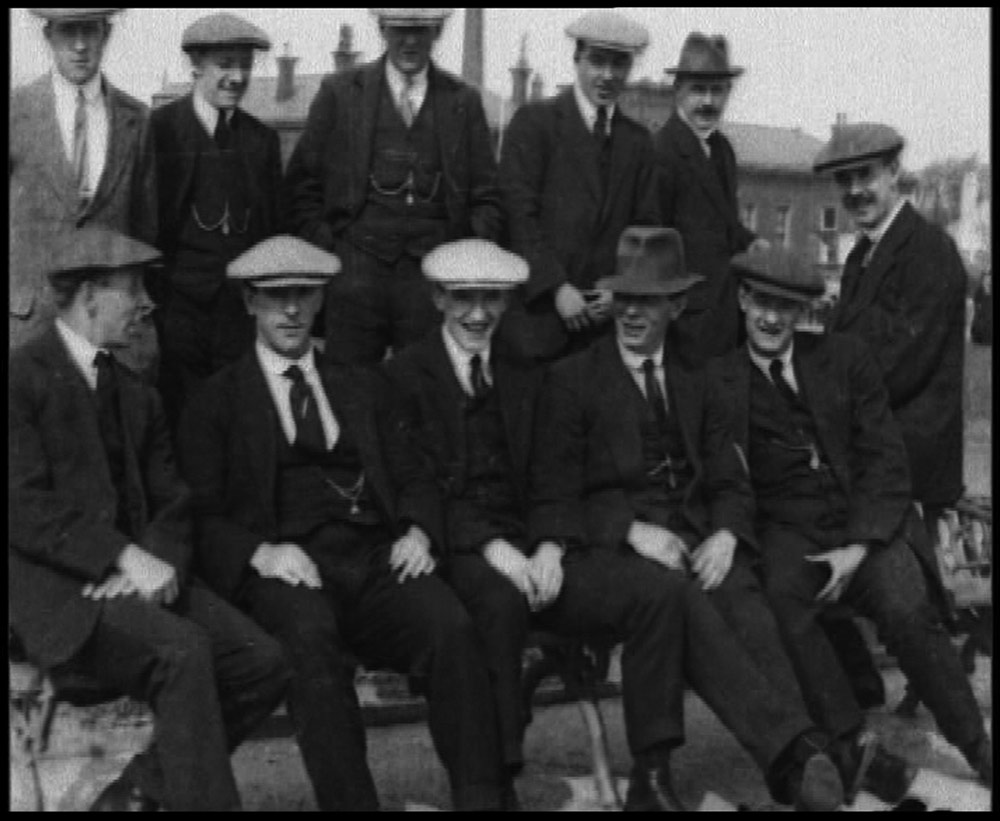
Figure 62: The Burnley Team Relaxing
The Newspaper Headlines
THE KING SEES BURNLEY WIN THE CUP. (Daily Mirror 27/4/1914)

Figure 63: Daily Mirror Front Page 27/4/1914
BURNLEY BRING HOME THE ENGLISH CUP
Boyle’s Men Win The First Royal Final.
Unprecedented Scenes of Enthusiasm and Rejoicing
The first Cup Final ever honoured by the presence of the King, was won at Crystal Palace on Saturday by Burnley by the only goal. It was a Royal Lancashire day. The two finalists hailed from the County Palatine, from Burnley and from Liverpool. The Duke of Lancaster, as the King is now toasted in our County, witnessed the entire game, shook hands with the respective captains and presented the Cup and medals, and the majority of the crowd had gone up from the northern area. The game was – well, “nowt to shout about.” We won and that’s all that need be said here. (Burnley Express 29/4/1914)
THE CUP FINAL – BURNLEY’S NARROW VICTORY.
LIVERPOOL BEATEN BY A GOAL TO NIL. (The Observer 26/4/14)
THE KING HANDS THE FOOTBALL CUP.
A DULL FINAL BUT FOR HIS MAJESTY. (The Manchester Guardian 27/4/14)
THE KING AT THE CUP FINAL – VICTORY OF BURNLEY. (The Times 27/4/1914)
BURNLEY RECEIVE THE CUP FROM KING GEORGE.
THE KING WITNESSES THE ENGLISH CUP FINAL. (The Athletics News 27/4/1914)
ENGLISH CUP FOR BURNLEY.
KING PRESENTS CUP – UNIQUE HONOUR FOR BURNLEY. (Hull Daily Mail)
BURNLEY WIN ROYAL FINAL.
FREEMAN’S GOAL BRINGS VICTORY. (Manchester Courier)
BURNLEY WIN THE CUP!
BRILLIANT VICTORY AT THE CRYSTAL PALACE. (Burnley Gazette)
The Daily Express was less emphatic over Burnley’s victory…
THE KING SEES A FUNEREAL FINAL Worse Game on Record, Redeemed by His Majesty’s Presence (Daily Express 27/4/1914)
In gothic type during their match report; The Daily Express wrote (rather unkindly),
Here Lie the Remains of the Worst Cup Final on Record.” (P8, 27/4/1914)
BLIND CRITIC OF THE CUP TIE
One of the most interesting figures at the Cup Final was Mr W. Meredith a blind man from birth, who was brought from Manchester in connection with the National Institute for the Blind. Mr Meredith has been a familiar figure on football grounds in the north and had mastered his details of the game thoroughly. At the Crystal Palace, relying chiefly on sounds, he followed the play with amazing confidence and was frequently able to name the player in possession of the ball and describe what he was going to do with it. “I liked Sheldon very much, he is a great forward but holds the ball too long,” said Mr Meredith, and
“the Burnley side struck me as a very robust one, they played vigorous football and swung the ball about in fine fashion.” Mr Meredith’s accuracy in following the game is explained by his keen sense of sound. He could tell by the interval of time between the sound of a kick and the sound of it bouncing how far and in what direction it has gone.” (Daily Express 27/4/1914)
A Heroes Welcome
The Burnley party checked out of the Charterhouse Hotel at 10:00 am on Monday morning and a fleet of taxis ferried them to London’s Euston station. A large group of supporters and well-wishers was already there to meet them in the station. Also at Euston, were Philip and Lady Ottoline Morrell which was quite a surprise to the Burnley players. Lady Ottoline had three bouquets of flowers made up of claret carnations with blue iris. She presented these to Mrs Whitehead, Mrs Windle and the last one to a blushing Annie Varley, Tommy Boyle’s fiancée.
Also at Euston waiting on the adjacent platform were the Liverpool team and officials waiting for their 10:57 train to Lime Street. Like Burnley, they had to return home to play their final League game of the season, against Sheffield United at Anfield. Once the Burnley players had all climbed aboard, the carriage doors were slammed shut and the train bearing the plate, ‘CORONATION’ pulled out. The Liverpool players sportingly cheering as the Burnley train left. In the first saloon carriage, Tommy Boyle placed the Cup, the handles adorned with claret and blue ribbons, on the table by the window. The Cup was filled with lemonade on the way back as it was a match day, Burnley hosting the final League game against Bradford City at Turf Moor that kicked off at 6:30 pm.
The train made good time and stopped first at Wilmslow at 1:40 pm where a portion of the train was detached. There were people gathered on the platform and Tommy Boyle held the Cup at the train carriage door for the small crowd to see. The train continued via Stockport and Droylsden and reached Manchester Victoria station at 2:30 pm. As the train pulled in it was met by a group of Manchester railway workers, porters and gangers, all offering their congratulations. Manchester Victoria was where the Burnley players said goodbye to team-mate Eddie Mosscrop, who waved as he set off across the station concourse for the Southport train. He wouldn’t play against Bradford as he was due back at school teaching the following morning.
While the train had stopped at Wilmslow, a wire had been sent to Affleck and Brown’s store in Manchester, to have twenty yards of wide claret ribbon and the same amount of blue to be waiting for them at Victoria station. While the train was halted, the engine was decorated with the material by the engine driver, John Haworth and the two Burnley trainers.
From 2:00 pm in Burnley centre, crowds had begun gathering outside the Town Hall. The local schools began closing early so the children could get a good view of the procession passing along Accrington Road from Rosegrove to Turf Moor.
“From Manchester, the train had a triumphal run” said Sportsman, “East Lancashire people were as proud of Burnley’s success as if it had been any other team from the area. As the train steamed past mills and workshops, workers could be seen at the windows waving flags and cheering. Particularly was this the case in the vicinity of Bolton, Darwen, Blackburn and Accrington. At these stations there were more demonstrations of delight. People came from all over. From Ramsbottom, Bacup and Blackburn in one direction and Nelson, Colne and Trawden in the other. Never has the district been so stirred and the beautiful weather which prevailed, made the affair quite a brilliant success. The streets at Accrington were packed with people and as the train passed over the arches the people cheered vociferously.” (Burnley News 29/4/1914)
The train steamed on its last leg through Huncoat and Hapton, past factories, mills and farms. People waved from foot-bridges and the trackside on the final part of its 220 mile journey home. Just five hours and twenty minutes since departing Euston, ‘Coronation’ reached its final destination, Burnley’s Rosegrove station at 3:50 pm. As the train steamed in to the platform, twelve fog signals placed on the track went off in quick succession signalling the train’s arrival to the waiting crowds.
As the decorated train came to a standstill, the shouting of those on the platform was increased by the cheering of the occupants of the train, the people going frantic as Boyle appeared proudly bearing the Cup which was adorned with claret and blue ribbons. Two bands – The Briercliffe Band and the National Reserve Band struck up ‘See The Conquering Hero Comes’ as the players stopped for photographs before climbing the steps to the station exit.
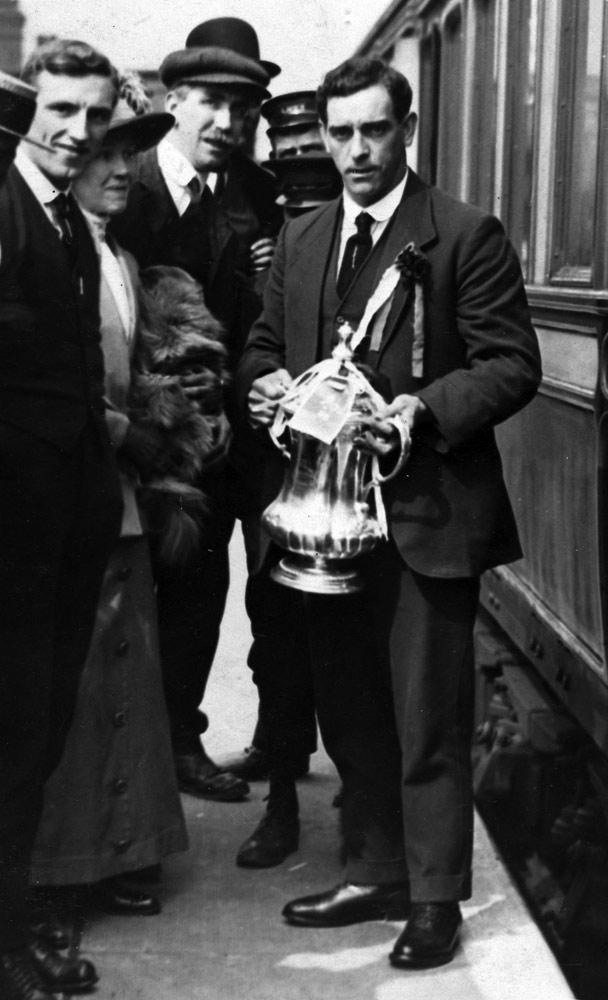
Figure 64: Tommy Boyle on Rosegrove Station Platform (Getty Images)
Sportsman in the Burnley Express estimated there were around 10,000 people waiting around Rosegrove station and the junction of Accrington and Rossendale Road. Willie Holt’s on the corner of Rosegrove Lane and Accrington Road had a banner saying, “We Watched You Win And We Congratulate You.” Many of the crowd were wearing Burnley colours and some were wearing ‘specially made round caps of claret and blue material.’
“Boyle came out of the station with the Cup to great cheers, followed by Freeman and Sewell, to climb aboard their transport. The procession comprised of six horse-drawn vehicles, and seven or eight motors. In front was a motor car with the Chief Constable then came the bands with the mounted police and after this a charabanc with the directors, officials and players. Boyle being on the front seat holding the Cup. In the next vehicle were the player’s wives and sweethearts and lastly the pressmen and behind this were the motors and carriages.” (Burnley Express 29/4/14) [Photos actually show the Burnley Team with the Cup on board a wagonette not a charabanc]
“Never before have scenes been witnessed in Burnley as were seen when the Cup-winning team came home on Monday bringing the much-coveted trophy with them. Thousands came from as far away as Bolton to see The Clarets take part in a victory parade journey by a wagonette from Rosegrove Station to Turf Moor by way of Burnley’s town hall on Manchester Road. Some workers had been granted the afternoon off, some lost a whole days pay to catch sight of their heroes.” (Burnley News 29/4/14)
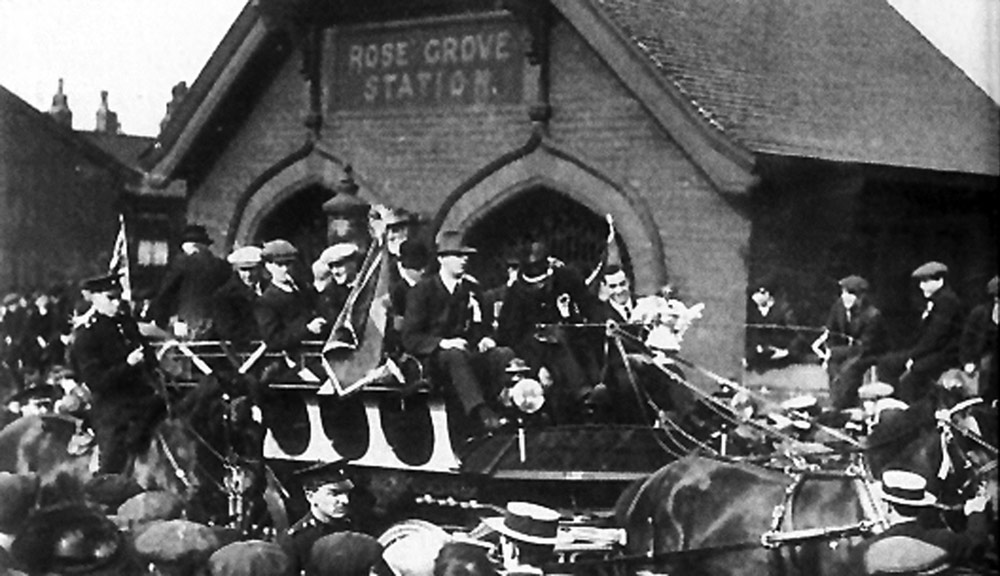
Figure 65: The Procession at Rosegrove
Crowds up to six deep in places on both sides of the road, lined the length of Accrington Road. People stood on steps and in their gardens. Some waved from shop doorways, balconies, upstairs windows, even rooftops. Some were perched on advertising boards as the Burnley team made their way slowly toward the town centre. So thick were the crowds in places, the police had a difficult job keeping the route clear and in Accrington Road, “there had been one or two unpleasant incidents.” At the end of Accrington Road, bunting was strung across the road and miniature silver cups were seen here and there, the crowd getting ever denser as the procession moved slowly forward. All the trams were temporarily stopped at the Mitre as the procession passed into Trafalgar Street.
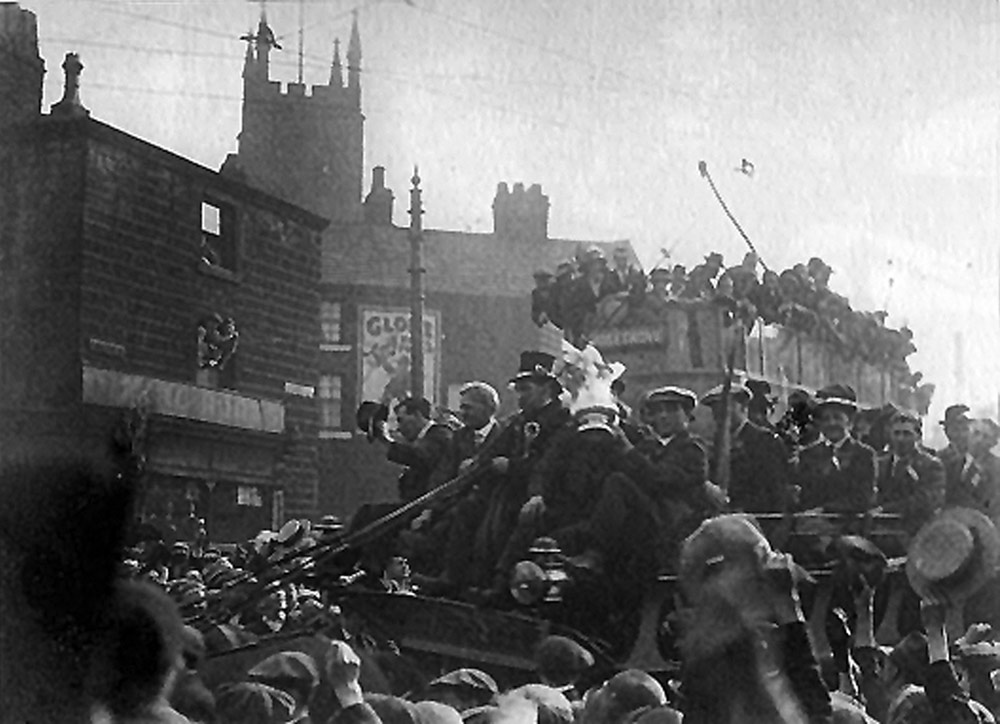
Figure 66: The Procession Reaches The Mitre.
After the carriages had entered Trafalgar Street, a shower of confetti fell on the procession from one of the mill windows. It was so hot holding the Cup aloft, Boyle had to remove his jacket, completing the journey in his waistcoat and shirt sleeves. Bunting adorned the length of Trafalgar Street, where workers waved from fire escapes and shouted from open windows.
When the procession had reached the end of Trafalgar Street, the spectacle that met their eyes was the most wonderful of all. The trams were stopped at the junction with Manchester Road with their drivers, conductors and passengers standing and waving as the procession went past, turning left toward the town hall. From the Canal Toll House all the way down the hill to St. James Street, all you could see was a sea of people. A solid mass of people, waving, cheering and singing. The band played and led the procession toward the Town Hall as the players were greeted with congratulatory banners hung from windows, welcoming home the team. Flags of all sizes were flying, coloured bunting flapped in the breeze hung from lamp-posts decorated the way. The noise was deafening.
The Burnley Express described the scene in Manchester Road.
“Manchester Road has never been so thronged as it was on Monday afternoon. From two o’ clock a steady stream of people poured into it and by 3:00 pm, the sight was a memorable one. In front of the Town Hall was a dense mass of humanity and the thoroughfare seemed black with folk downwards as far as the ‘Centre’ and upwards as far as the eye could see. It was a good humoured crowd and was composed of men, women and children. How the latter survived the ordeal is a credit to their vitality but there were some who had to be pulled out by the police and taken to a place of safety. The crush at times was terrific and it calls for comment that the authorities should have permitted the trams to run as long as they did and that they did not put up some barricades. The running of the cars made matters worse and the poor girls and women in the crowd had a weary time while the mammoth cars were getting through. When the thoroughfare became packed the more venturesome spirit invaded the enclosure in front of Brunswick Chapel by climbing over the railings. Others climbed on to the roof and had a capital view. A sailor created much diversion for the crowd by climbing a lamp-post and knocking off the mantle in doing so.”
The Bradford City team had arrived at Manchester Road station around the same time and were trying to make their way to Turf Moor. The road was a solid mass of people so they were escorted inside the Town Hall by the police and straight out of the back entrance to help them get to Turf Moor.
Opposite the Town Hall one group of Burnley supporters held up a banner which read,
“Long Live the Memory of Our Heroes,” in silver and gold letters. They also sang a ragtime parody, part of which went -
Burnley keeps on doing it, doing it, doing it,
See little Mosscrop running up the line;
Don’t he put his centres in fine?
See Bert Freeman put it over the line;
It’s a goal, It’s a goal, It’s a goal. - Well
Everybody’s shouting it, shouting it, shouting it
Ain’t that football thrilling your soul?
Hear the Burnley spectators brawl
Come along Bert, let’s have another goal
Everybody’s shouting it now.
The Mayor, Mayoress and members of the Corporation looked out from the upper floor town hall windows and at 4:40 pm the procession slowly came to a halt outside the Town Hall. The crowds were so thick the players could not get out of their vehicles. The Mayor came to the entrance steps of the Town Hall as far as he could and offered three cheers for the team. It was previously thought that at this point the team went inside the Town Hall and waved to the crowd from the balcony but the Burnley Express reports state that, “it was judged wisest for the footballers to go forward to Turf Moor - and this they did.”

Figure 67: The Scene Outside Burnley Town Hall (Getty Images)
The Express’s report of the team NOT waving from the town hall balcony conflicts with another source, a recollection of the day written in 1963 by former Burnley chairman, Bob Lord,
“I stood as a youngster amid the mighty mass of people assembled near the Town Hall of Burnley to cheer home our Cup winners of 1914. That vast crowd was there, together with the city fathers, to welcome the Cup to Burnley for the first time. The team came out on the balcony, and there was Tommy Boyle, the captain, holding the Cup in triumph as high above his head as he could in order that all those people should see it. Even I, as a nipper of six, I could see it. How I thrilled!” (Lord, 1963)
After a short halt, the procession carried on down Manchester Road and on to Yorkshire Street where more crowds were waiting. By this stage the crowds from around the Town Hall had begun to slowly follow the procession. The cheering was deafening. At the end of Yorkshire Street the procession were in sight of Turf Moor and at the junction of Brunshaw and Belvedere Road, a banner proclaimed, “Welcome To The Victors.” The procession came to a halt outside Turf Moor’s Brunshaw Road stand where the players managed to dismount and go inside.
The turnstiles were already open for the evening game and many of the Burnley supporters that had followed the team at The Palace were already inside. They gave their team a rousing reception as Tommy Boyle came out onto the pitch with the Cup in his arms, and the band struck up “See the Conquering Hero Comes.” By 6:30 pm and kick-off, a big turn-out gathered for the Clarets final game that would bring the curtain down on the 1913-14 season.
The Final Match of the Season
Sportsman thought that the Bradford game was one of the best games he had witnessed all season. Ronnie Sewell kept his place in goal and the only omission from the Cup winners was Eddie Mosscrop. His place was taken by Levi Thorpe with Billy Watson switching to the outside-left position.
Burnley v Bradford City, Turf Moor, Monday 27 April, Kick-Off 6:30 pm
The Teams lined up:
Burnley: Sewell, Bamford, Taylor, Halley, Boyle, Thorpe, Nesbitt, Lindley, Freeman, Hodgson, Watson.
Bradford City: Ewart, Potts, Boocock, McIlveny, Hargreaves, McDonald, Bond, Fox, Walden, Storer, Logan
Referee: Mr Palmer (Hucknall Torkard)
Tommy Boyle lost the toss and Burnley played against the wind toward the Cricket-Field End. Burnley began well and made several attacks on the Bradford goal with the Yorkshiremen kept on the defensive. On 15 minutes, City broke away and scored a goal against the run of play through Bond. Then Bert Freeman won the ball and proceeded one of his trademark dribbles on goal, “practically trying to walk the ball into the visitors net,” said Sportsman, before Ewart ran out and grabbed the ball off him. Five minutes after City scored, they did it again, Bond scoring his second goal. A hush fell over the crowd as City looked like they intended to spoil the celebration party. And despite the Clarets making most of the headway in the game, it was Bradford who took a shock 2-0 lead into the half-time interval.
Burnley began brighter in the second half. Ewart was the much busier of the two goalkeepers for the first 20 minutes. Burnley attacked only to be beaten back by the City defence. A Billy Nesbitt cross found Bert Freeman whose shot Ewart cleared only for McIlveny to then handle in the penalty area. Mr Palmer pointed to the spot and Tommy Boyle stepped up and converted the penalty to put the Clarets back in the game amid great cheers. Burnley then forced two corners and pressed for long periods but with little in the way of attacks from the visitors.
In the 85th minute Bert Freeman put in a great shot which Ewart saved under the crossbar and could only put the ball out for a corner. Boyle called for all his men to come forward. Nesbitt centred and running in from the edge of the box was full-back Dave Taylor who met the ball with his head, to give Ewart no chance and level the scores. The goal was greeted with tremendous applause. Boyle pushed his team forward again hoping for a winner. “Burnley had the better of the bout for the remaining minutes.” The match finished at 2-2 and after Mr Palmer’s final whistle had sounded, the crowd broke onto the pitch and gathered around the front of the stand, cheering frantically. “The scene was a really remarkable one and will live long in the memory of those present and the same jubilation was manifested outside the enclosure,” said Sportsman.
At Full Time: Burnley 2 (Boyle pen, Taylor), Bradford 2 (Bond 2)
Attendance: 35,000 (Gate receipts £705)
--xxx---
The Cup was brought up to the front of the stand and was held up first by the Mayor and then Mayoress. Tommy Boyle appeared and as the Mayor was unable to congratulate the team at the Town Hall, he gave his thanks to the team from the stand. Bert Freeman’s father Tom was present and also said a few words. Later that evening, the Burnley players visited Cronkshaw’s Temperance Hotel for a late dinner and ended their evening at the Empire Theatre where in the interval, the team with the Cup, were invited up onto the stage to a cheering audience.
The following Tuesday evening, the Mayor invited the Burnley team and directors to dinner at the Bull Hotel. Guests included Mr G. H. Pullon JP, Mr J. N. Grimshaw, Mr J. H. Ashworth and Mr T. H. Freeman, father of Bert Freeman. The Mayor toasted, “The English Cup Winners”
Before Tommy Boyle rose to cheers and gave a short vote of thanks.
“Thank you Mr Mayor. On behalf of the players it was a great privilege and honour to have won the English Cup. We fought hard last year but were beaten in the semi-final. This year we had got it! [Cheers] I hope that next year we will be at the top of the First Division and can I sincerely thank you for the hospitality tonight.” After dinner, the players and officials visited The Palace Theatre.
On Wednesday morning, the players drove to their training headquarters at Lytham to show off the Cup and then on to Southport in the afternoon before travelling to play cup-opponents Liverpool in a charity match at Anfield in the evening.
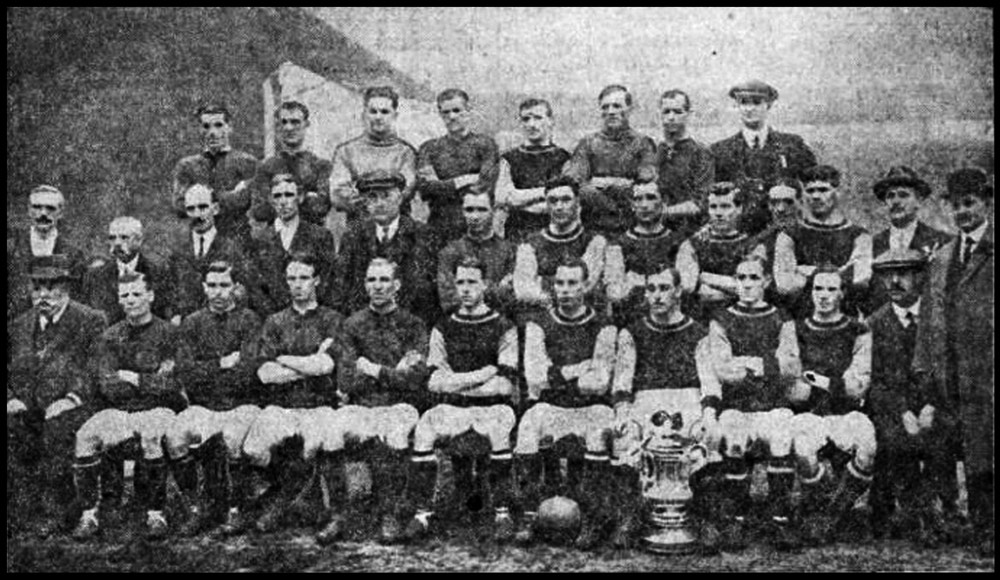
Figure 68: Burnley and Liverpool at Anfield, 29/4/1914
Wednesday’s Burnley Express printed the following song from William Cheeseborough, titled, “Done It,” to the tune of God Save The King.
DONE IT!
Burnley have won the Cup
Now let them fill it up
With good champagne
Good boys, Sir, every one;
On merit they have won
Let’s hope what they have done
They’ll do again.
We now with pride can say
Each man was fit to play
Before the King;
Bert Freeman did the trick
Dashing and fleet and quick
Say, boys, that he’s a brick!
His praises sing.
Tom Boyle, the captain then,
Right ably led his men,
Before the King.
Royal was their display,
Each man shone in the fray,
On that historic day,
God save the King.
Burnley Collier in Trouble
One Burnley supporter had missed the train home and the homecoming celebrations having been arrested in London and spending the weekend in the police cells.
“A Burnley collier was charged at Old Street Police Court, London on Monday (27 April) with disorderly conduct and with assaulting the police. A constable stated that at 12.20 on Sunday morning the prisoner asked him the way to King’s Cross Station. He directed him and without any provocation the prisoner punched him on the chest. He arrested him and then the prisoner then tried to trip him up. Prisoner said he was very sorry. He had come up from Burnley for the Cup Final and had got too much to drink.
Magistrate Mr Chester Jones: Is that the way you behave in Burnley? We do not allow such conduct in London. The prisoner murmured something about a “long day” and the magistrate imposed a fine of 10 shillings. The prisoner said he had no money left, but if allowed to return home would send the money. The Magistrate said: “Very well, you are on your honour. Pay on Saturday.” (Burnley Express, 29 April 1914)
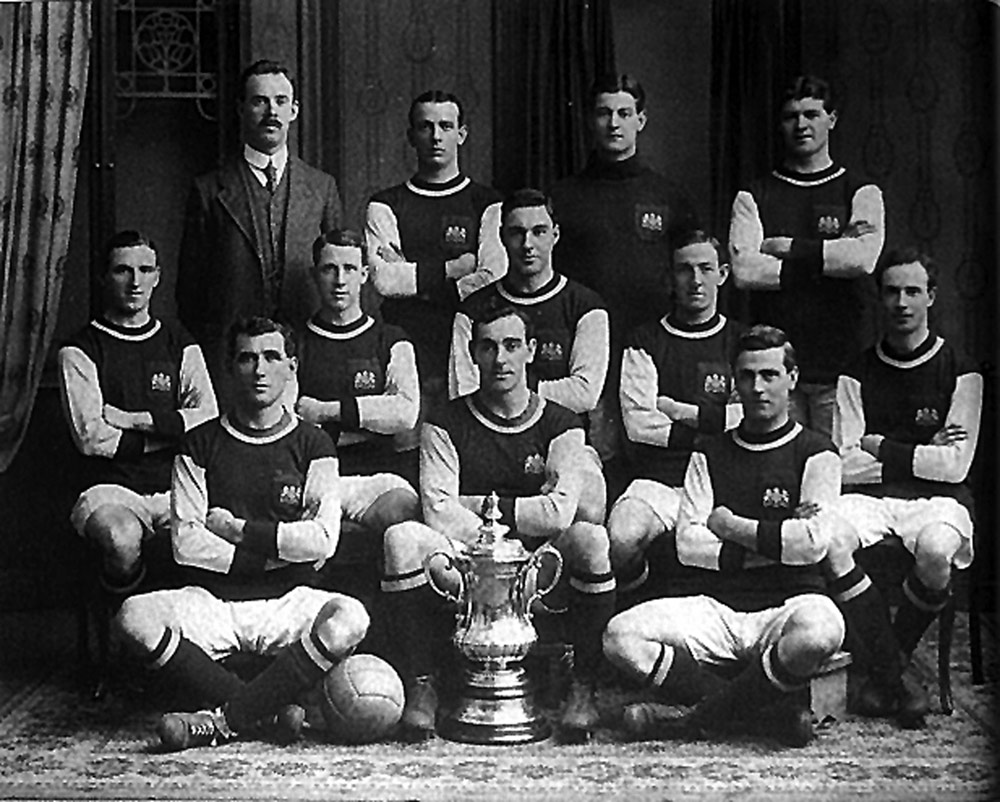
Figure 69: Burnley Team With The FA Cup.
Back Row L to R: Ernie Edwards (Trainer) Tommy Bamford, Ronnie Sewell, Dave Taylor
Middle Row: Billy Nesbitt, Richard Lindley, Bert Freeman, Teddy Hodgson, Eddie Mosscrop
Front Row: George Halley, Tommy Boyle, Billy Watson.
The busy week of engagements continued for the players. On Thursday there was a tour of local towns and villages travelling as far as the Ribble Valley, to show off the Cup. A fortnight later, the Burnley party departed on a month long European tour that took in several European countries and the team played several exhibition matches along the way.
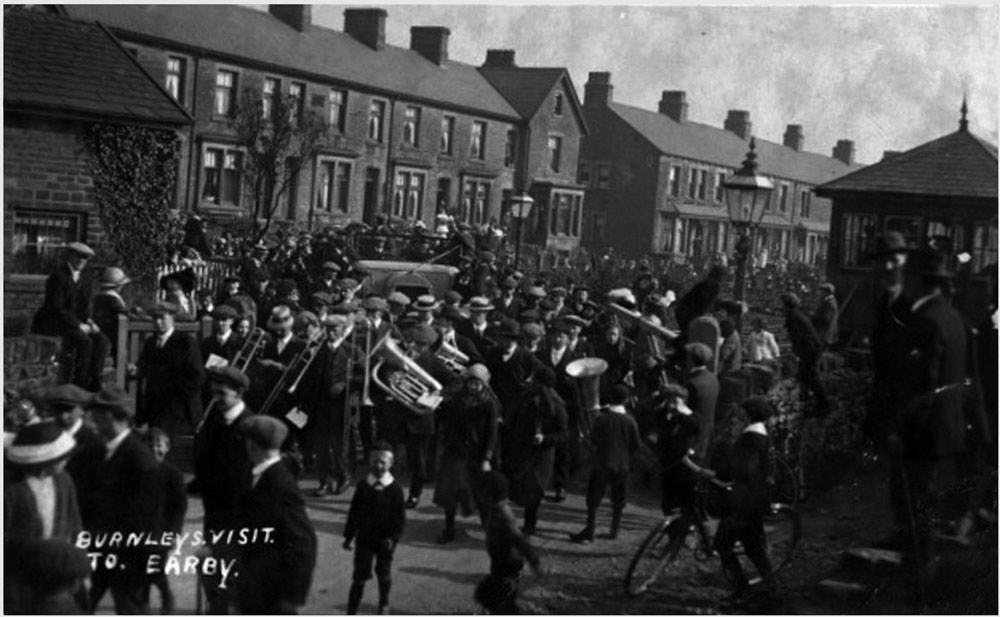
Figure 70: Burnley on Tour in Earby.
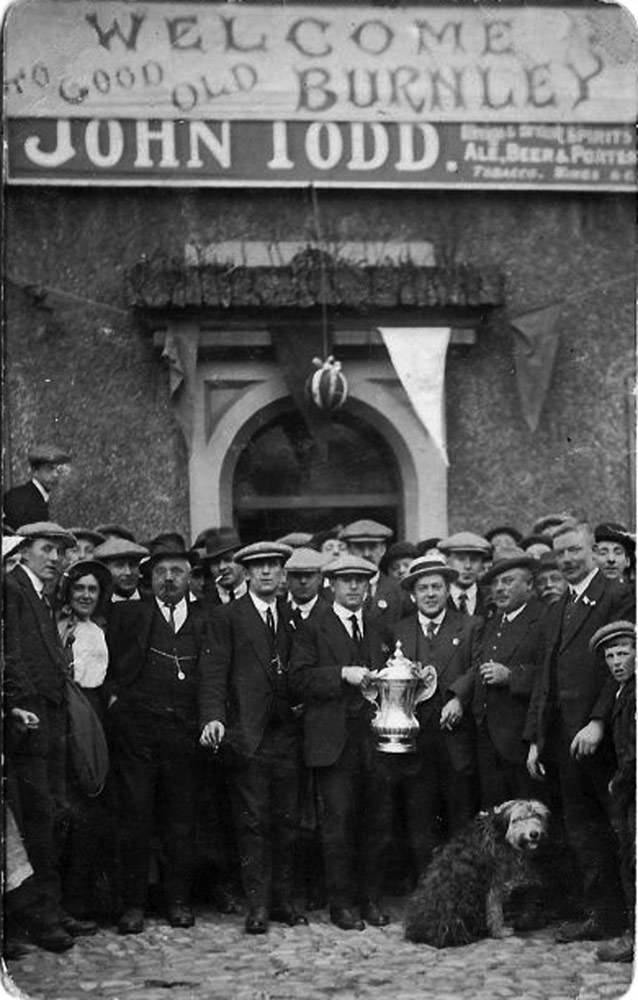
Figure 71: Burnley Players Outside the Thorn Hotel in Burnley
The summer of 1914 was one of the hottest on record in Lancashire with temperatures of 100 degrees recorded in the mills in Burnley. That summer, East Lancashire ruled the football world, Burnley as FA Cup winners, and Blackburn Rovers as First Division champions. Next seasons football fixtures arrived before the Wakes Weeks holidays got underway on the first weekend in July. All seemed well as local holidaymakers packed their suitcases for a relaxing week at by the seaside with no idea of the situation that was building in Europe.
On the 4th of August 1914, war was declared and from that point on the world would never be the same. The euphoric summer came to an abrupt end. The 1914-15 football season went ahead as planned and the FA Cup but by the summer of 1915, professional football in England was outlawed, the Football League was dismantled and the FA Cup mothballed. As the bloody war continued, the eleven members of the FA Cup winning team and all those who had been a part of Burnley’s great season, found themselves involved in the war effort. By the end of the war some of them had become prisoners-of-war, some of them had been wounded in action and others were psychologically affected. Five of the players in the Burnley squad in 1913-14, including Teddy Hodgson, the leading goal-scorer in Burnley’s 1914 Cup campaign, made the ultimate sacrifice for their country.
In 1920-21, two years after the Great War ended, Burnley won the Football League Championship for the first time with several of the players who had won the Cup. During that season the team went a record-breaking thirty League games undefeated. That record was held over sixty years until Arsenal bettered it in 2004. It was a great achievement, a great record, of that there is no doubt. But did winning the League in 1921 come anywhere close as winning the Cup and the historic welcome homecoming that followed during that amazing week in late April 1914? A hundred years on in 2014, we celebrate the great achievement Burnley made in winning the Cup in front of the King. The eleven heroes who made history that April day in 1914, may no longer be with us, but their legend lingers on.

Figure 72: A flower bed in Burnley’s Scott Park in the Summer of 1914, Celebrating the Burnley Teams Great Achievement.
Though nothing can bring back the hour
Of splendour in the grass, of glory in the flower;
We will grieve not, rather find
Strength in what remains behind;
In the primal sympathy
Which having been must ever be...
– William Wordsworth
The End
--xxx---